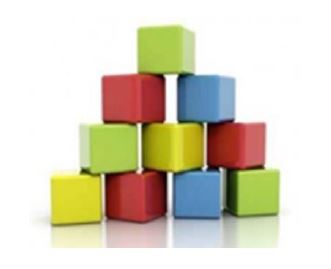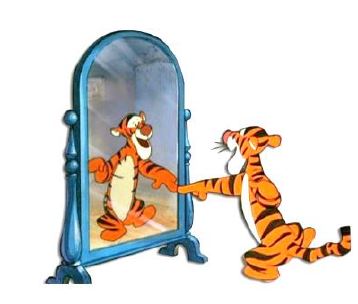

In the last session we thought about the importance of noticing all the ways your child is communicating and what message they are trying to send.
In this session we are going to think about what you can do when your child seems to find it difficult to send a message to you.
If this is true for your child, then you can help build the foundations for their communication by noticing what they are doing (any action or sound), copying them, and waiting.
When you spend time beside them, gently and quietly letting them lead and you follow, they will gradually realise that you are responding to what they do. And this is the beginning of an interaction between you.
The video and handout will give you a step by step guide to following your child’s lead and imitating.
This approach is called Intensive Interaction. You can find out more by clicking the ‘more ideas’ icon below.
Introduction
For some children, the ‘back and forth’ of communication is really difficult.
It can be difficult for your child to notice that you are trying to interact with them.
It can also be really hard for you to notice the ways in which your child is sending a message.
If this sounds true for you and your child then
is a great way to help us get the channel of communication open.
Here are a few steps you can try – but remember not to rush through the steps. Don’t put yourself under pressure – just enjoy quietly being with your child.
If this sounds true for you and your child then Imitation (copying) is a great way to help us get the channel of communication open.
Here are a few steps you can try – but remember not to rush through the steps. Don’t put yourself under pressure – just enjoy quietly being with your child.
1. Notice a time when your child is content
They might be just looking around them or they might be enjoying exploring an object. Try to avoid a time when they are watching something on the TV or a tablet.
2. Come alongside them quietly and gently
Come just as close as your child is comfortable with but not close enough to disturb them. It will probably take a bit of time to work out what is close enough – that’s fine.
3. Notice what your child is doing
It might be something that is hard to spot, it’s so subtle, but when you get used to watching carefully you will notice something:
– They might be playing with their hand
– They might be doing something with an object
– They might be making a funny sound
4. Copy their action or sounds and then wait
Whatever they do, just copy exactly what they do and then wait. If they have an object you will need to get one the same or similar so you can copy their action.
5. Stick at it
It doesn’t matter if your child doesn’t seem to notice that you are copying them. They will eventually. Your job is to keep copying then waiting, then copy again and wait.
6. When your child notices you copying them, do it again……and wait
Your child will gradually realise that they are leading this back and forth interaction with you, and that it is fun.
When they realise that you are letting them lead the interaction they will realise there is no pressure on them, they are in charge. Your child will gradually start to do the action or noise on purpose to get you to copy them. That’s how the channel of communication between you gets started.
This approach is called ‘Intensive Interaction’
You can learn more about it by clicking the links on the Session C Page Tiger page. Sure Start Building Blocks for Communication – 1 (pagetiger.com)

 Intensive Interaction – Guide for Parents
Intensive Interaction – Guide for Parents
What is intensive interaction?
Intensive interaction is method of teaching communication skills to individuals.
Intensive interaction can be carried out by anyone anywhere.
Intensive interaction can develop the following interaction skills:
Participation and shared enjoyment
Building relationships
Using and understanding eye contact (e.g. looking)
Using and understanding facial expressions (e.g. smiling)
Turn taking in communication through exchanges of behaviour (e.g. copying actions)
Using vocalisations
Who is Intensive Interaction For?
Intensive Interaction is for individuals who are at the early stages of communication development.
It can be used with individuals across the age span i.e. very young children to adults.
Why Intensive Interaction?
The aim is to develop communication through relaxed and enjoyable sequences between you and the child.
Let the child take the lead during the interaction. The adult responds to and join-ins with their behaviour.
Through these interactions, your child can learn fundamental communication skills.
How to do Intensive Interaction
Set aside some time to be with your child to carry out Intensive Interaction.
Make sure your child can see your face – Get down to the same physical level of your child.
Give them your full attention.
PAUSE – wait, be patient and watch carefully what your child is doing. This will give your child time to process your response and to give them an opportunity to respond to you.
Let the child lead and direct the interaction – join in and copy their behaviours (e.g. facial expressions, vocalisations, movements)
Follow the pace of your child. Remember, the focus of the interaction is your child.
The interaction should be fun and relaxed!
Stop the interaction when the child has had enough. It is ok for sessions to be short or repetitive.
You don’t need to use other objects during the interaction, but it is ok if your child uses objects (e.g. toys) during the interaction section.
Through many positive experiences from these interactions, your child will begin to learn that engaging with others can be enjoyable and rewarding.
For more information and video examples of Intensive Interaction, please see link below:
https://www.intensiveinteraction.org/find-out-more/about-intensive-interaction/how-does-it-work/
Session C Video: Sure Start Building Blocks for Communication – 1 (pagetiger.com)
Video Script
Follow your child’s lead and imitate.
Welcome back. Since the last video, I hope you have been able to notice some of the things your child is doing to let you know what message they want to send to you.
Some of you may find it difficult to notice what your child is doing to communicate because they aren’t at the stage where they realise that they can do things that help get that message across to you.
If that’s the case, then it may also be hard for your child to notice when you do or say something. If this is what you are finding then there is something you can do that will help get the see saw of communication going.
The handout for this session will go through the steps in detail for you but basically try noticing what your child is doing, copy them and wait.
Pick a time when your child seems content. The key is for your child to be leading and you following – that way, there is no pressure placed on your child. Just quietly and gently be with them – if they are sitting, sit beside them if they can tolerate that. If they are lying, you lie down too. It might take you a wee while to work out what is close enough – your child will soon let you know if you have come too close!!
Then notice when they do something – they may make a sound, or a hand movement or a body movement, or they may be doing something with an object. If they have an object at that moment, then you get one too. Just notice what they do, copy them… and wait.
Use the handout to guide you through the steps. You are just waiting for your child to do something again, however tiny or insignificant, and you copy and then wait.
And just keep doing this. It doesn’t matter if your child doesn’t seem to notice you – it is good to spend some contented time together, and they will notice eventually. Don’t be discouraged if it takes weeks – it is time well spent.
Once your child does notice that you are copying them, they will start to do an action or make a noise to get you to copy – and that is the beginning of an interaction. When this starts to happen just keep imitating and then waiting. Let your child lead the interaction and you follow.
By starting with copying your child, you have developed a People Game all of your very own.
Bye for now
